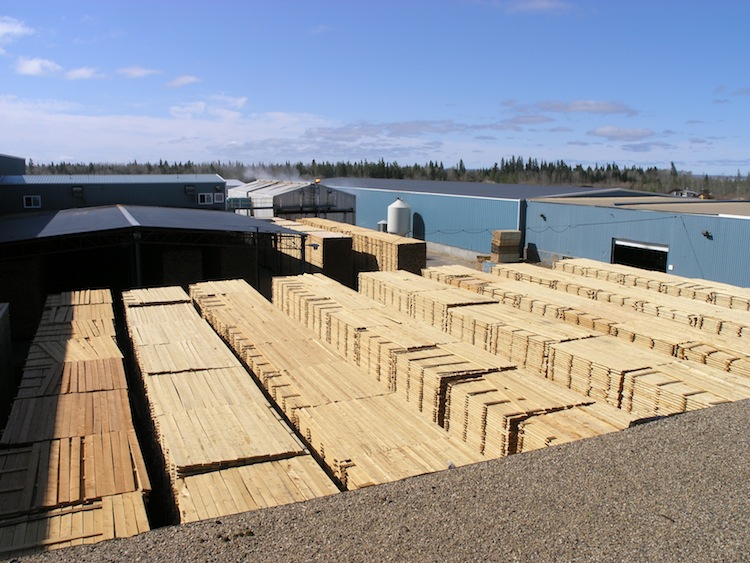
Powering Up
July 5, 2013
By Canadian Biomass
 July 5, 2013 - In addition
to ramping up its Norsask Forest Products lumber operation in northwestern
Saskatchewan, Meadow Lake Tribal Council (MLTC) is also expanding its bioenergy
portfolio.
July 5, 2013 - In addition
to ramping up its Norsask Forest Products lumber operation in northwestern
Saskatchewan, Meadow Lake Tribal Council (MLTC) is also expanding its bioenergy
portfolio.
MLTC is 100 per cent owned
by nine First Nations communities around Meadow Lake, and holds a diverse array
of companies, including forestry, aviation and trucking. The bulk of its
holdings are somehow tied to the province's forest sector, with its recent
foray into bioenergy serving as another example of that.
"We have a very synergistic
approach to our forest business," explains Trevor Reid, vice president and COO
of MLTC Industrial Investments Limited Partnership. "We like to see all the
streams connected, and all with revenue attached to get the most from the
resource. Adding the energy component is a logical next step."
Pellet Projects
The first of these projects
has been an R&D scale pellet plant and marketing arm. Located adjacent to
the Norsask sawmill and feeding off dry planer shavings, the current plant can
make up to 1 ton/hr. As Reid explains, the objectives are different than
Canada's mainstream export-driven pellet industry.
"The goal was to produce
enough pellets to develop and feed five local pilot heating projects, arranged either
through our subsidiaries or our communities that are dependent on oil or
propane. The pellets we make currently feed the new planer mill building,
Westwind Aviation's hangar in Saskatoon, MLTC Northern Trucking's shop, a
school in Big Island Lake First Nation, and four houses in Canoe Lake Cree
Nation."
With over half of MLTC's
communities dependent on oil or propane, the vision is to take a residual from
the forest operations, convert it to a fuel, and act as a utility that can
provide turnkey, renewable heat at a savings to the end user.
"We are challenged
logistically from a pellet export perspective, but at the same time we see a
real need among our communities for an alternative fuel. Rather than treating
pellets like a commodity, we'll offer total heating packages that we'll supply
with our pellets."
The company has been
collecting data for the past 18 months, and feels comfortable now ramping up
production to consume the full mill shavings output. That will amount to 40 to
50 tons per shift, for about 35 tons of pellets per shift.
Residual Power
Part of the reason for a
slight delay in expanding the pellet project has been a welcome distraction in
trying to get a massive 40 MW power generation project going (36 MW net). The
$210 million project ($160 million for construction costs) has been in the
works for almost three years, and when we spoke with Reid in late June, the
final steps were being taken to secure debt financing and an engineering,
procurement and construction (EPC) turnkey contractor had been selected. Reid
was anticipating foundation work to start in the fall.
One of the main drivers for
the project sits just a few hundred meters from the Norsask sawmill, in the
form of one of Canada's few remaining tee-pee burners.
"It's an obvious opportunity
to turn a liability into revenue, and completes the whole business model. Also
Saskatchewan has seen tremendous growth in recent years, and expects more. Sask
Power is reaching out via the First Nations Power Authority for some
significant extra generating capacity, and we see a role in that."
With its own integrated
forestry operation, MLTC avoids the fuel risk that many other proposed
bioenergy projects can get bogged down in.
"The sawmill provides 50 to
60 per cent of the needs of the proposed plant. Our preference is to get the
rest in the form of residuals from other plants, but regardless we have the
fibre from harvest residuals and other supplies. We've had an independent fuel
study done, and we have a secure supply."
Print this page